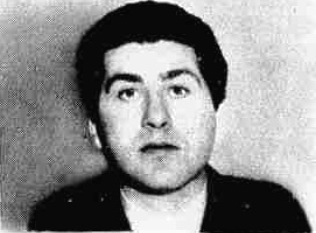The Camorra is an Italian Mafia-type criminal organization and criminal society originating in the region of Campania. It is one of the oldest and largest criminal organizations in Italy, dating to the 17th century. The Camorra's organizational structure is divided into individual groups also called "clans". Every capo or "boss" is the head of a clan, in which there may be tens or hundreds of affiliates, depending on the clan's power and structure. The Camorra is considered by the Italian Government to be the most violent and murderous criminal organization in Italy. The Camorra's main businesses are drug trafficking, racketeering, counterfeiting, and money laundering. It is also not unusual for Camorra clans to infiltrate the politics of their respective areas.

Cava de' Tirreni is a city and comune in the region of Campania, Italy, in the province of Salerno, 10 kilometres northwest of the town of Salerno. It lies in a richly cultivated valley surrounded by wooded hills, and is a popular tourist resort. The abbey of La Trinità della Cava is located there.

Antonio Gava was an Italian politician and member of Christian Democracy (DC). Son of the 13-time minister Silvio Gava, Antonio was one of the Christian Democratic Party's leading power-brokers in Campania over a 25-year period, beginning in 1968 and ending in 1993, when he was charged with membership of a criminal organisation. Together with Arnaldo Forlani and Vincenzo Scotti, he was the leader of DC's current known as "Alleanza Popolare".

Roberto Saviano is an Italian writer, essayist, journalist, and screenwriter. In his writings, including articles and his book Gomorrah, he uses literature and investigative reporting to tell of the economic reality of the territory and business of organized crime in Italy, in particular the Camorra crime syndicate, and of organized crime more generally.
The Nuova Famiglia was an Italian Camorra confederation created in the 1970s and headed by the most powerful Camorra bosses of the time, Carmine Alfieri, the Nuvoletta brothers, Michele Zaza, Luigi Giuliano and Antonio Bardellino, to face Raffaele Cutolo's Nuova Camorra Organizzata, and affiliated with the Sicilian Mafia.

Carmine Alfieri is an Italian Camorra boss, who rose from Piazzolla di Nola to become one of the most powerful members of Neapolitan Camorra in the 1980s. As boss of the Alfieri clan, he was one of the most influential and powerful Camorra bosses from 1984 until his arrest in 1992. Alfieri's nickname is 'o 'ntufato, the angry one, thanks to the dissatisfied, angry sneer he wears constantly.

Pasquale Galasso is a former boss of the Galasso clan, a clan of the Camorra, the Neapolitan crime organization. Since August 1992, he has been a pentito, collaborating with the Italian justice. He revealed many intricate secrets about the Camorra. This led to revelations from other pentiti allowing an insight into the Camorra from the insider's point of view.

Francesco Schiavone is a member of the Camorra, the Caserta organized crime syndicate, and the head of the Casalesi clan from Casal di Principe in the province of Caserta. He has been dubbed Sandokan after a popular 1970s television series starring Kabir Bedi because of his thick, dark beard.
The Nuova Camorra Organizzata was an Italian Camorra criminal organization founded in the late 1970s by a Neapolitan Camorrista, Raffaele Cutolo, in the region of Campania. It was also known by the initials NCO. The organization was established with the purpose of renewing the old rural Camorra, which dealt in contraband cigarettes and extortion schemes in the Neapolitan fruit market. To this end, Cutolo created a structured and hierarchical organization, in stark contrast to the traditional Camorra clans which are usually fragmented. The members of the NCO were often referred to by rival Camorristi and Italian law enforcement as "Cutoliani".
Luigi Giuliano is a former Italian Camorrista who was the boss of the powerful Giuliano clan based in the district of Forcella, Naples. He had multiple nicknames including "'o rre" and "Lovigino", which is an amalgamation of Luigi and love. In 2002, he decided to collaborate with Italian law enforcement and became a pentito, a co-operating witness against organised crime.

Antonio Bardellino was a powerful Neapolitan Camorrista and boss of the Casalesi clan, having a prominent role in the organized crime in the province of Caserta during the 1980s. He was one of the last of the old-style Camorra godfathers.
Mario Fabbrocino was a powerful Italian crime boss of the Camorra – the Neapolitan mafia.

Antonio Iovine is a powerful Italian Camorrista and one of the bosses of the Casalesi clan from Casal di Principe in the province of Caserta between Naples and Lazio. His nickname is 'o ninno, because of his baby face when he was made a capo at a very young age.

The Nuvoletta clan was a powerful Neapolitan Camorra clan operating from the town of Marano di Napoli, situated on the northern outskirts of the city of Naples, southern Italy. The Nuvolettas belonged to a new style of Camorra, one that had the dimensions of a large corporation, and considered much more entrepreneurial. The clan was affiliated with several Sicilian Mafia families and was considered one of the most powerful Camorra clans between the 1970s and 1990s, however, since the death of its historical leaders and the large number of arrests and seizures made by the Italian police, the clan was succeeded by the Polverino and Orlando clans, both families with great degree of kinship with the Nuvoletta family.
The Alfieri clan was a Neapolitan Camorra clan operating on the north-east of Naples, with its sphere of influence in the municipalities of Saviano and Nola.

Assunta "Pupetta" Maresca was an Italian criminal who was a well-known figure in the Camorra. She made international newspaper headlines in the mid-1950s when she killed the murderer of her husband in revenge.
The Russo clan is a Neapolitan Camorra clan operating in the town of Nola and its surrounding territories. Police say the Russo clan had total control over illegal activity in about 40 towns in the Naples region.
The men's tournament of football at the 2019 Summer Universiade was held in July in Naples, Italy.
The Cesarano clan is a Camorra clan from the town of Castellammare di Stabia, in the Metropolitan City of Naples.









